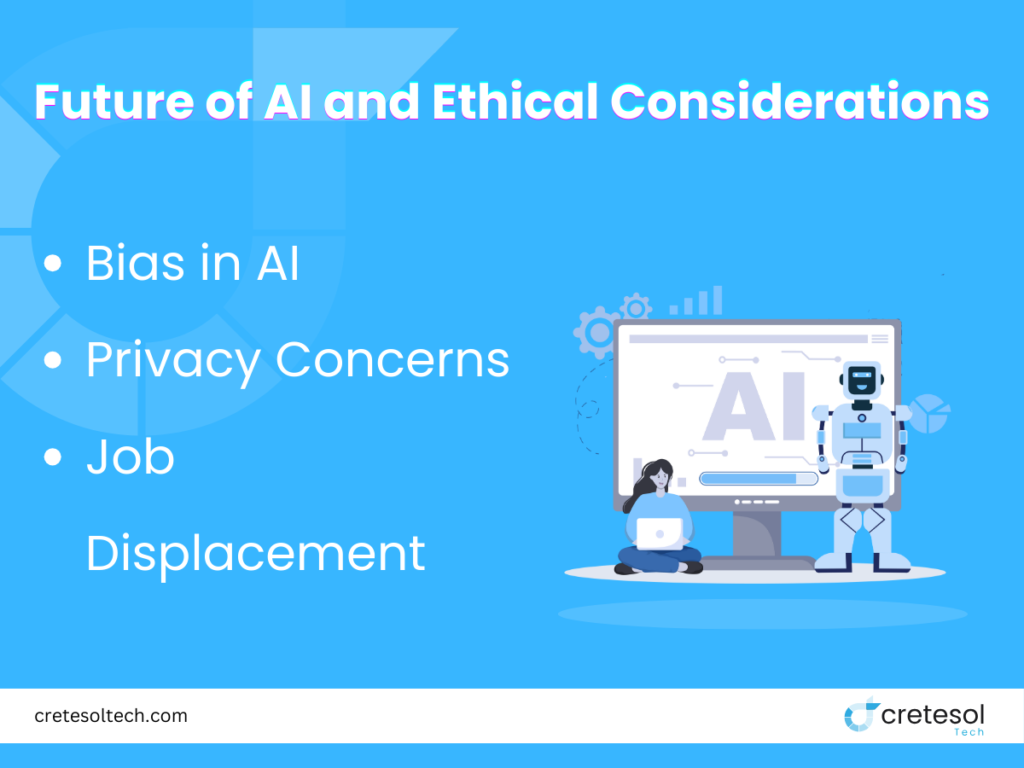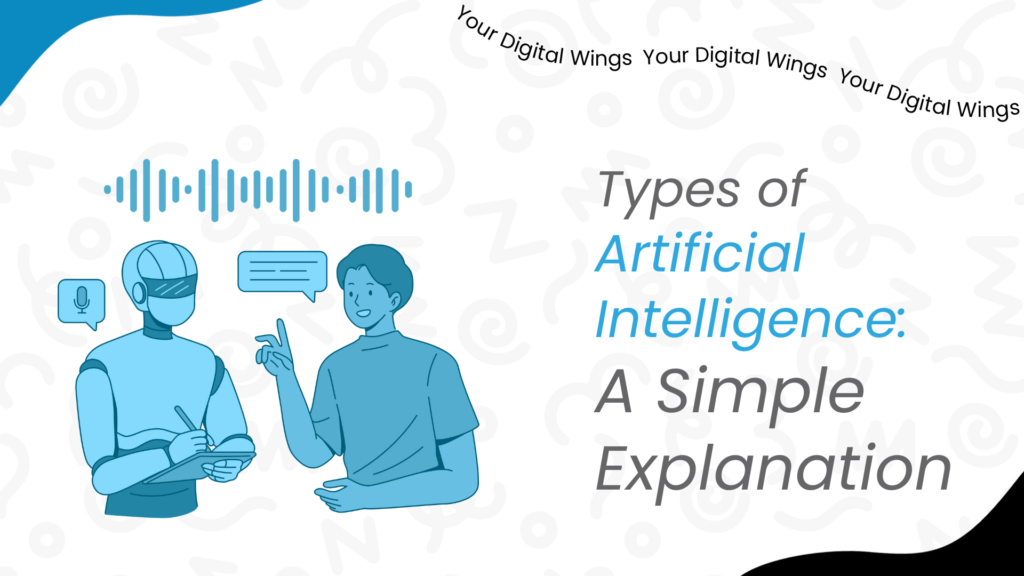There is no longer any doubt that Artificial Intelligence (AI) has become a reality in our society today. It has started transforming various sectors and everyday activities and processes. But what is AI, and what are its types?
In this blog post, we will analyze the different types of artificial intelligence, their applications, and their effects in real life.
What is Artificial Intelligence?
Artificial Intelligence definition: Artificial Intelligence is defined as machines or systems that replicate human mental activities, including learning, problem-solving, and decision-making. From chatbots to self-driving cabs, AI facilitates technologies that evolve and enhance themselves as time progresses.
AI is a combination of data, software, and computing power used to accomplish tasks that generally require the human touch.
Why is Artificial Intelligence Important?
AI fosters innovation through the following means:
- Automation for monotonous activities (for instance, in production).
- Improving the quality of decisions through sophisticated data analysis.
- Custom tailoring of experiences for users (like predictions made by Netflix).
Sectors such as healthcare, finance, and retail utilize AI to enhance business processes, reduce costs, and provide enhanced solutions.
Types of Artificial Intelligence
Artificial intelligence is divided into three groups based on its capabilities, usefulness, and underlying technology.
Classification of AI Based on Capability
Narrow AI (Weak AI): This type of AI focuses on individual tasks, such as face detection or translating languages. Some examples are as follows:
- Virtual assistants, such as Alexa and Siri.
- Systems for making recommendations (Netflix, YouTube).
- Chatbots for client support.
General AI (Strong AI): An AI that can learn and perform any activity intelligently like a human. It’s a speculative type of AI that can use knowledge across many tasks. It seeks to:
- Recognize various situations.
- Adjust to new situations.
- Display human-like cognitive abilities.
Super AI: A type of AI whose capabilities exceed a human’s in problem-solving, creativity, and even emotional understanding. If accomplished, it could:
- Address difficult global problems.
- Transform industries.
- Present existential dangers.
| AI Type | Description | Example |
| Narrow AI | Excels at a single task; most prevalent nowadays | Alexa, Spam filters |
| General AI | Theory of human-like intelligence | Not achieved yet |
| Super AI | Surpasses the intelligence of humans | Hypothetical (e.g., sci-fi AI) |
Classification of AI Based on Functionality
The basis for this classification is AI’s capacity to process information and make better decisions.
Reactive Machines: Stick to set rules, such as using recommendation engines.
Limited Memory AI: Analyzes and learns from past data, such as with fraud detection systems.
Theory of Mind AI: AI that will one day exist can understand human emotions and intentions.
Self-Aware AI: Theoretical AI that possesses consciousness.
| AI Type | Description | Example |
| Reactive Machines | Operates without memory using real-time inputs. | Deep Blue (Chess AI) from IBM |
| Limited Memory AI | Makes decisions based on historical facts. | Autonomous vehicles and fraud detection |
| Theory of Mind AI | AI in the future that is sensitive to human emotions. | Still in the planning stages |
| Self-Aware AI | Artificial intelligence that is capable of consciousness. | Not present at the moment |
Classification of AI Based on Technologies
AI processes data and makes choices using a variety of methods.
Machine Learning (ML): Machine learning and AI do not operate separately. They integrate to allow systems to learn from their data and improve over time. Machine learning is applied in:
- Predictive analytics—stock market, healthcare diagnostics.
- Fraud detection in banking.
- Image and speech recognition.
Deep Learning: Deep learning is a component of ML that relies on using neural networks to imitate the functions of the human brain. It helps with:
- Facial Recognition Systems
- Medical Imaging Analysis
- Self-Driving Cars
Natural Language Processing (NLP): Machines are able to understand, analyze, and reply to human speech because of NLP. Some popular uses are:
- Virtual assistants, chatbots.
- Tools for translating languages.
- Social media monitoring’s sentiment analysis.
| AI Type | Description | Example |
| Machine Learning | Patterns in the data teach algorithms. | Analytics for prediction |
| Deep Learning | Neural network-based machine learning subset. | Systems for recognizing images |
| NLP | Facilitates understanding of language. | ChatGPT and other chatbots |
How Does AI Impact Different Industries?
The effects of artificial intelligence on specific sectors are enormous, providing improved solutions and productivity. Here is how AI’s influence is observed in key sectors:
Healthcare: AI has the potential to bring a paradigm shift to the healthcare sector. AI helps healthcare by interpreting medical images such as X-rays and MRIs to detect diseases at their earliest stages.
Moreover, AI speeds up the process of drug discovery by analyzing enormous datasets to find suitable compounds, which is a time-consuming and expensive task.
Money Management: The world of finance now incorporates the use of AI tools to help identify fraudulent transactions. AI helps to analyze unusual activities and mark them as suspicious in real-time.
AI also allows robotic advisors to give people automated financial guidance, which helps many people plan their finances better.
Retail: To improve consumer engagement through personalized suggestions, retailers apply AI technologies. Engines for recommendation analyze users and their activities to recommend products that enhance customer satisfaction and sales efforts.
Moreover, AI facilitates inventory control by ensuring product availability.
Automation: The revolutionary shift in daily operational activities through automation by robots powered by AI is exponentially changing the manufacturing industry. Additionally, the production rate is also increasing along with enhancement in accuracy.
Cutting costs and reducing human mistakes increases the competitiveness of industries. Artificial intelligence applications reveal change across the board. From medicine to commerce, pioneering new avenues and crafting advanced solutions to problems yet to come.
Future of AI and Ethical Considerations
The future of artificial intelligence, such as general AI and robotics, may posses some exceptional features that will be supremely beneficial to mankind. Nevertheless, ethical problems come with these innovations:

Bias in AI: There are human biases captured through the algorithms.
Privacy Concerns: Data collection has its own risks.
Job Displacement: There is an imminent threat of humans losing their jobs due to automation taking over various operational aspects.
Regulatory structures, ethical AI design, and transparency can be extremely helpful in overcoming these challenges.
Conclusion
AI transcends the boundaries of technological advancement. It has proven to be a living reality that has transformed entire industries and our everyday lives. From a narrow AI type that operates through virtual assistants to the more intricate General AI and Super AI, types of artificial intelligence are endless.
Integrating AI into society’s everyday lives poses a challenge in itself. It raises ethical questions related to bias, privacy, and job loss. AI is not just a tool; it serves as an accelerator for advancement and continues to deliver immense changes to the world around us.
FAQ’s
AI is classified by capability (Narrow, General, Super) and by functionality (Reactive, Limited Memory, etc.)
AI is used in medicine (medical imaging), finance (participation in stock markets), marketing (virtual assistants), and transportation (self-driving cars).
AI will improve automated processes, AI-human partnerships, and the moral aspects to avoid risk and injustice from AI functionalities.
Start by taking online courses in data analysis, Python programming, and machine learning.

 United Arab Emirates
United Arab Emirates